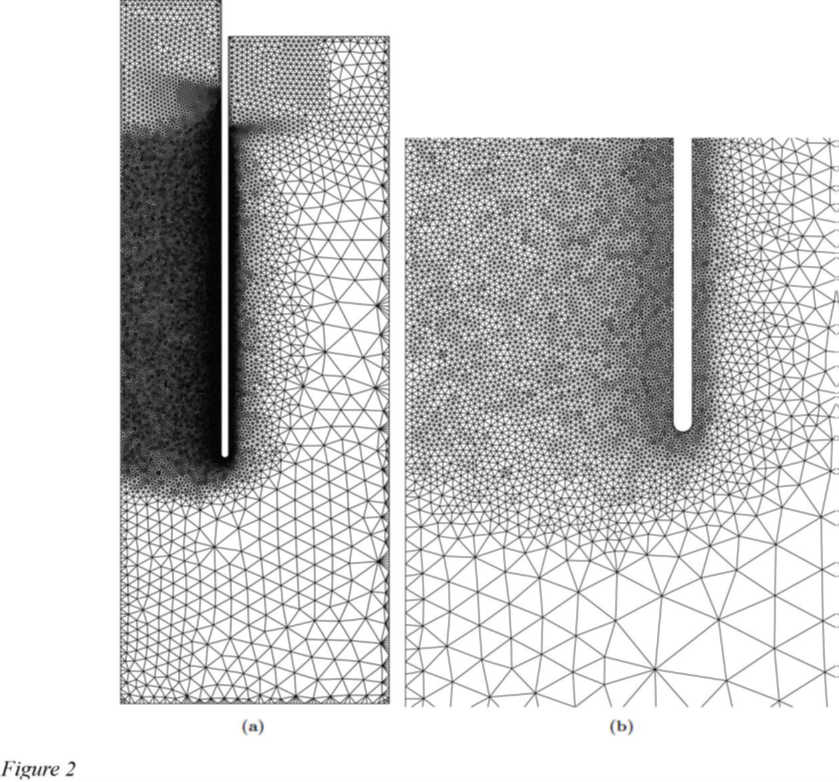The paper presents numerical analyses of smooth tube sampling in clay using the particle finite-element method. Borehole tube sampling is a key process of geotechnical engineering. The soil is described by a conventional elasto-plastic constitutive model (Tresca plasticity and a quasi-incompressible elastic law). The sampler is advanced by several diameters into the soil until a steady state is observed. The elasto-plastic numerical solution for a round-tipped sampler clearly identifies a localised shear failure mechanism at the entrance of the tube. Relevant strain path method (SPM) solutions are numerically evaluated to facilitate full field comparison. For a given thickness ratio elasto-plastic simulation predicts far less compression but much larger extensions at the centreline than SPM. The results also show how including a bevelled sampler tip or a stationary piston changes the failure mechanism and significantly reduces induced peak extension strains. The results agree with available experimental data and well-established empirical observations. The methodology presented may open the way to a soil mechanics-based rational approach to soil sampling simulation.
Monforte, L., Arroyo, M., Carbonell, J.M., Gens, A. (2022). Large-strain analysis of undrained smooth tube sampling. Geotechnique, 72(1), 61-77. https://doi.org/10.1680/jgeot.19.P.354
https://doi.org/10.1680/jgeot.19.P.354
Hvorslev (1949) argued that area ratio was a fundamental parameter in sampler design, controlling the entrance of excess soil in the sampler; he also stated that the influence of area ratio could be counteracted by edge taper and / or by the use of a stationary piston. This advice was quantified approximately through painstaking experimental campaigns by himself and other later researchers. Those insights are largely confirmed by the GPFEM analyses presented in this paper.
Strain Path Method solutions presented by Baligh et al (1987) quantified the effect of thickness ratio but left out important features, such as the presence of a piston. ISA predictions of centerline strain paths appeared reasonable and have been taken many times as a guide to plan experimental campaigns and design or refine sampling instruments. The results presented here raise significant doubts about this approach. It would seem that a sounder basis for future advance in the complicated mechanics of sampling is given by advanced elasto-plastic numerical modelling such as that presented here. This will be particularly so if more complex aspects such as sampler friction, partial drainage, softening or dynamic effects are of interest.
This work has been supported by the Ministry of Science and Innovation of Spain through research grant BIA2017-84752-R. The third author acknowledge financial support from the Spanish Ministry of Economy and Competitiveness, through the “Severo Ochoa Programme for Centres of Excellence in R&D” (CEX2018-000797-S)


Leave a Reply